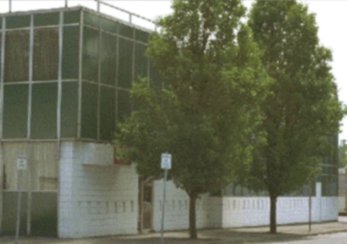
|

|
| About . Before computers . Mainframes . Minicomputers . Other stuff . Projects . Wish list . Information . Library | |

Computer Collection Background
A Little History
I began collecting in university (at Wisconsin) with the Packard Bell PB-250, which was taking up space in a rack we wanted for the CS lab. For a while I thought I would just collect a few minicomputers for the fun of playing with them and keeping them working. I got on the DOD and GSA sales lists and kept an eye out for interesting machines. I also saw larger machines and noticed they always went to scrap.
Eventually I realized that very few of the great old machines were being saved, because they are too large for general collectors or even fair size science museums. I decided to aquire an IBM 1401 as they started to disappear from the surplus lists. Since my garage was then full with the IBM 1130 and Digital PDP-5, this also meant taking the next step and leasing warehouse space to house the collection. I started on the sixth floor of what is now the Honeyman Building in Northwest Portland. The collection expanded and was moved to the third floor for more space and better electricity.
Gwen Bell at The Computer Museum turned me on to Herb Burke and his IBM 709. I visited every time I was up in Seattle, then when Herb had to move out I bought all his stuff - two 709's, the 7094, the Univac 1004 and a lot of related equipment. All this stuff doubled the size of the collection which now took the entire north half of the third floor.
The whole collection had to be moved when the building was sold to be converted to lofts. Robert Gamblin, who had a small artist's paint making operation on the same floor, found a good building nearby and invited me to sublease the extra space he didn't need. This was very convenient, but it wasn't much more space than I had before (it was, however, all I could afford) and pretty soon the collecting stopped. Eventually, the sublease was about to run out and Bob's growing business needed the room. My wife and I decided to try to buy our own commercial investment property with enough extra room for the collection.
Our Building
After looking for a year and waiting another year for the deal to go through, we purchased the building pictured above. It is not far from OMSI on Portland's east side. (Unlike OMSI it is well above the flood plain.) The first floor was leased out and the second floor held the collection. The building was originally built to have a machine shop on the second floor, and it is very sturdy.
Collecting Philosophy
The first goal of the collection is to save some good large machines on the West Coast for the edification and amusement of future generations. There were already significant collections on the East Coast in The Computer Museum in Boston and at the Smithsonian. These were broad collections including many important one-of-a-kind artifacts. I have none of these, however in contrast I pursued depth in the machines I do have. I try to obtain examples of major successful machines; this is a lot easier than finding rare single specimens. Each major computer is a complete system, hopefully someday in running order. I want to augment every system with complete documentation, software, auxilliary equipment, and appropriate ephemera. Several of the oldest machines are already well on their way.
Plans for the Collection
While packing the collection for the move to our building I began an inventory with photographs, which is where the first pictures on these pages came from. I planned to continue this inventory and put everything in some initial order.
This web site was started in 1997 and was planned to be a virtual museum while working on inventory of the collection.
I then planned to create a computer museum. I took a few first steps and attended a tutorial on starting a museum when the AAM held its annual conference in Portland.
A New Plan
A few years after consolidating the collection in its new home I retired, or at least quit working. Ultimately I discovered that while it was still fun to add the occaisional tidbit to the collection other new interests were taking all my time and I had lost interest in playing with the collection.
Meanwhile, the collection of The Computer Museum in Boston moved to Sunnyvale in the Bay area and became the Computer History Museum, with a broadened scope that overlaps more with my intended museum. More recently, the Living Computer Museum in Seattle was established, bracketing my collection on the West Coast with two of the best computer museums in the world. Closer to home, the tenants sharing our building changed and began to grow, pushing the collection off the second floor.
The new plan is to reduce and refocus the collection. I started in 2014 by donating the IBM 709, 7094, 650 and some other machines to the Computer History Museum, which for reasons related to the initial priorities in Boston has a deficiency of early IBM computers. Other machines may be made available to other museums, but most of the computers in the collection will probably be sold.
As I sell off the rest of the computer collection I am taking notes and photos to add to this site. When it is all gone there will finally be an inventory of what was once in the collection and this virtual museum on the web will be complete.
You can contact me by email: prp@teleport.com